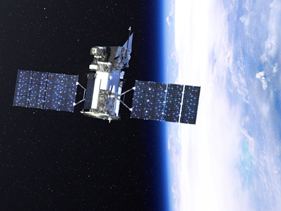Mission type Climate research Power 400 watts Launch mass 545 kg Rocket Minotaur-C | Operator NASA / GSFC Launch site Vandenberg LC-576E Launch date 4 March 2011 | |
 | ||
Website glory.gsfc.nasa.gov/index.html Mission duration Failed to orbit3–5 years planned Similar ADEOS I, Parasol (satellite), Essaim (satellite) | ||
The Glory satellite was a planned NASA satellite mission that would have collected data on the chemical, micro-physical and optical properties—and the spatial and temporal distributions—of sulfate and other aerosols, and would have collected solar irradiance data for the long-term climate record. The science focus areas served by Glory included: atmospheric composition; carbon cycle, ecosystems, and biogeochemistry; climate variability and change; and water and energy cycles. The US$424 million satellite was lost on March 4, 2011, when its Taurus XL carrier rocket malfunctioned. A subsequent investigation revealed that the fairing system failed to open fully, causing the satellite to reenter the atmosphere at which point it likely broke up and burned.
Launch
The launch from Vandenberg Air Force Base, near Lompoc, California, aboard a Taurus XL rocket was originally planned for February 23, 2011. It was postponed due to a malfunction in ground support equipment. The next liftoff attempt was March 4, 2011. The Taurus rocket also carried three small CubeSat satellites built by university students in Montana, Colorado and Kentucky, the NASA ELaNa I manifest.
The launch took place on March 4, 2011, at 2:09:43 am Pacific Standard Time (10:09:43 UTC) from Vandenberg Air Force Base. The Taurus XL rocket's first three stages functioned as planned, but the nose cone (also known as the payload fairing) failed to separate 2 minutes 58 seconds after the launch. The nose cone covers and protects the satellite during launch and ascent, and is designed to separate and fall away shortly after the launch. Due to the failure of the nose cone to separate, the rocket remained too heavy to reach the correct orbit. According to launch director Omar Baez, the satellite and launcher likely crashed in the southern Pacific Ocean. The failure was estimated to have cost at least $424 million. This only includes the cost of the satellite itself, and not the cost of the launcher and launch services. During the previous failed Taurus XL launch, the vehicle and services were estimated to have cost $54m.
The previous Taurus XL launch with the Orbiting Carbon Observatory (OCO) in February 2009 also ended in a failure due to failed payload fairing separation. Following the failed OCO mission, Taurus XL launches were put on hold for two years as the rocket's manufacturer Orbital Sciences Corporation tried to fix the payload fairing separation problem, obviously without success. A British OCO scientist said the loss of Glory was a great blow to the NASA Earth science program, especially since the reason for the launch failure was the same as with OCO.
During a news conference shortly after the launch, Rich Straka from Orbital Sciences Corporation said his company was investigating the failure, noting, "there really isn't enough data to say anything more than the fairing didn't separate."
